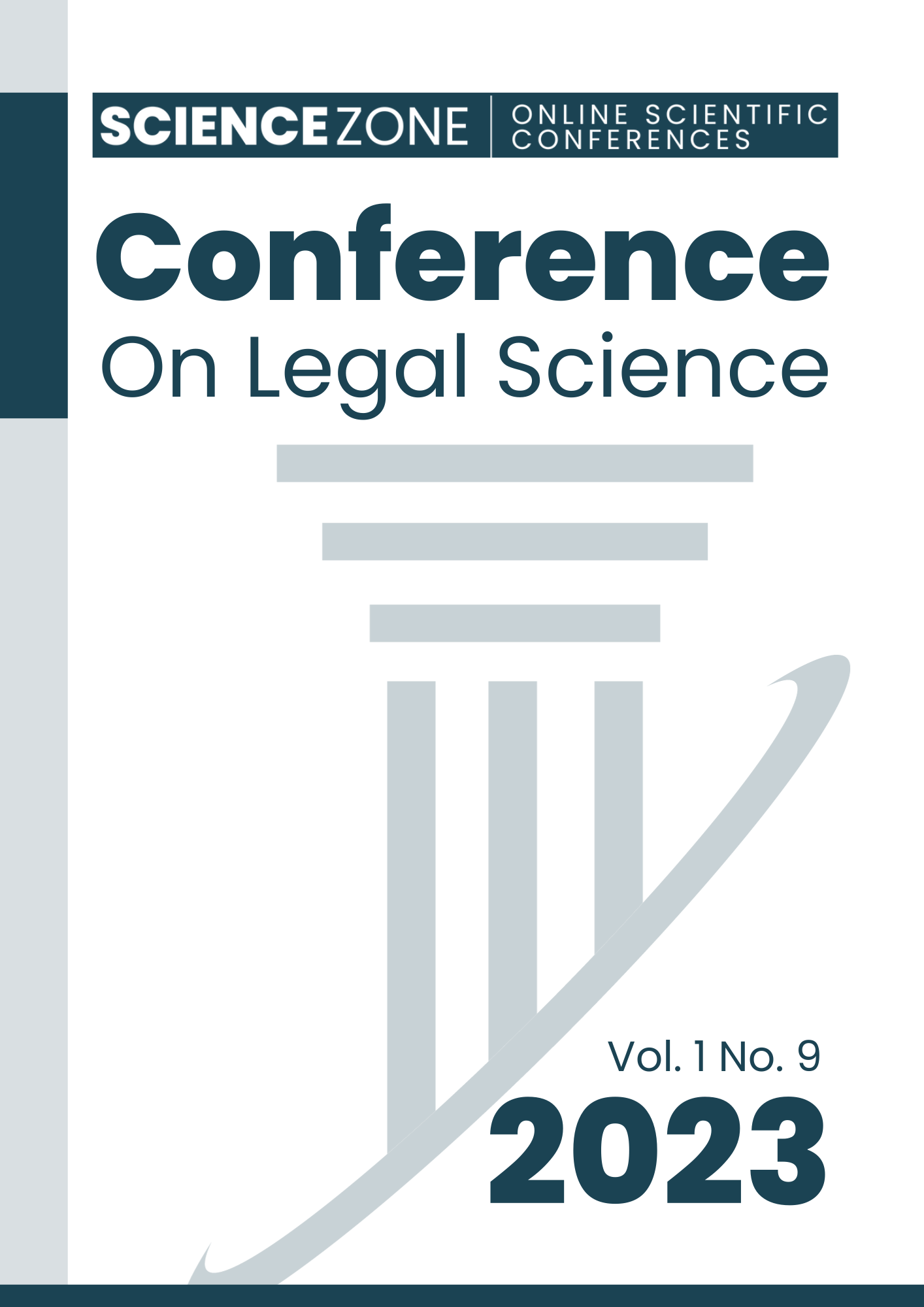Kiberxavfsizlik tizimida sun'iy intellektning tutgan o‘rni
Keywords:
Sun’iy intellekt, kibertahdid, kiberxavfsizlik, zararli dastur, mashinani oʻrganishAbstract
Kibertahdidlar ko‘lami va murakkabligi bo‘yicha o‘sib bormoqda va bu o‘z tarmoqlari va ma’lumotlarini himoya qilishga urinayotgan tashkilotlar uchun katta muammo tug‘dirmoqda.[1] Sun’iy intellekt (AI) xavfsizlik guruhlariga ushbu muhit bilan hamnafas bo‘lishda yordam beradigan muhim vosita sifatida paydo bo‘lmoqda. AI va mashinani o'rganish algoritmlari zararli dasturlarni aniqlashdan tortib, insayder tahdidlarni aniqlashgacha bo'lgan kiberxavfsizlik operatsiyalarini o'zgartirish imkoniyatiga ega. Biroq, AIdan foydalanish tashkilotlar tushunishi va kamaytirishi kerak bo'lgan xavflarni ham keltirib chiqaradi. Ushbu maqola bebaho texnologiya sifatida, balki puxta nazoratni talab qiladigan texnologiya sifatida kiberxavfsizlikda AIning hozirgi va kelajakdagi roli haqida umumiy ma'lumot beradi.
References
Voo, J., Hemavathi, A., Pu, C. et al. Cyber threat intelligence and analytics. SN COMPUT. SCI. 1, 160 (2020). https://doi.org/10.1007/s42979-020-00160-9
Al-Hawawreh, Mousa and Sitnikova, Elena, Identification of Threat Intelligence Services Providers: An Overview (October 27, 2018). 2018 1st International Conference on Computer Applications & Information Security (ICCAIS), 2018, Available at SSRN: https://ssrn.com/abstract=3321459
Jordan, Micheal and Mitchell, Tom, Machine learning: Trends, perspectives, and prospects, Science 17 Jul 2015, Vol. 349, Issue 6245, pp. 255-260, DOI: 10.1126/science.aaa8415
Hou, Shifu and Saas, Arsene and Ye, Yanfang and Chen, Ling, Deep4MalDroid: A Deep Learning Framework for Android Malware Detection Based on Linux Kernel System Call Graphs, 2019 IEEE/WIC/ACM International Conference on Web Intelligence (WI), 2019, Pages 359-366, ISBN 978-1-7281-0868-2, https://doi.org/10.1145/3350546.3352541.
Garcia-Teodoro, Pedro and Diaz-Verdejo, Jesus and Macia-Fernandez, Gabriel and Vazquez, Enrique, Anomaly-based network intrusion detection: Techniques, systems and challenges, Computers & Security, Volume 28, Issues 1–2, 2009, Pages 18-28, ISSN 0167-4048, https://doi.org/10.1016/j.cose.2008.08.003.
Carminati, Maria and Caron, Roberto and Maggi, Federico and Epifani, Igino and Zanero, Stefano, BankSealer: A decision support system for online banking fraud analysis and investigation, Computers & Security, Volume 53, 2015, Pages 175-186, ISSN 0167-4048
Narayan, Abhishek and Gama, Joao and Robles-Kelly, Antonio and Gaber, Mohamed Medhat, Ensemble learning and artificial intelligence for fighting spam, Ensemble machine learning, Chapter 13, pp 339-361, ISBN 978-1-4419-9326-7
Fadlullah, Zubair Md and Tang, Feng and Mao, Bo and Kato, Nei, State-of-the-Art Deep Learning: Evolving Machine Intelligence Toward Tomorrow's Intelligent Network Traffic Control Systems, in IEEE Communications Surveys & Tutorials, vol. 19, no. 4, pp. 2432-2455, Fourthquarter 2017
ontes, Elvis and Silva, Plinio and Lima, Adriana and Bastos, Rafael and Jino, Mario, Technology Overview of Artificial Intelligence Applied in Cybersecurity, 2019 IEEE International Symposium on Software Reliability Engineering Workshops (ISSREW), 2019, Pages 12-17
Guidotti, Riccardo and Monreale, Anna and Ruggieri, Salvatore and Turini, Franco and Giannotti, Fosca and Pedreschi, Dino, A Survey Of Methods For Explaining Black Box Models, ACM Comput. Surv. 51, 5, Article 93 (August 2018), 42 pages, https://doi.org/10.1145/3236009.
Galetsi, Pinelopi and Katsikas, Steven, Security, privacy and trust in the IoT, Internet of Things Principles and Paradigms, Chapter 7, 2016, Pages 239-259, ISBN 9780128053959, https://doi.org/10.1016/B978-0-12-805395-9.00007-X.
Brandes, Lisa and Vargas, Alicia, Cybersecurity Education in a Rapidly Evolving Cyber Landscape, Journal of Cybersecurity Education, Research and Practice: Vol. 2020: No. 1, Article 5.
Biggio, Battista and Fumera, Giorgio and Roli, Fabio, Security evaluation of pattern classifiers under attack, in IEEE Transactions on Knowledge and Data Engineering, vol. 26, no. 4, pp. 984-996, April 2014, doi: 10.1109/TKDE.2013.57.
Jobin, Anna and Ienca, Marcello and Vayena, Effy, The global landscape of AI ethics guidelines, Nature Machine Intelligence 2019 1:9, 1 September 2019, https://doi.org/10.1038/s42256-019-0088-2.
Géron, Aurélien, Hands-On Machine Learning with Scikit-Learn, Keras, and TensorFlow: Concepts, Tools, and Techniques to Build Intelligent Systems, 2nd Edition. O'Reilly Media, 2019. ISBN: 9781492032649.
Al Falasi, Aisha and Al Falasi, Falah and Al-Muhairi, Maytha, Artificial Intelligence Models for Cyber Security Incident Handling and Response: A Survey, 2022 4th International Conference on Smart Computing and Informatics (SCI), 2022, Pages 1-7, doi: 10.1109/SCI55520.2022.9679620.
Ponemon Institute. The Value of Artificial Intelligence Based Cybersecurity in the Enterprise. Published January 2019, Accessed from https://www.lumu.io/ponemon-report/
Apruzzese, Giovanni and Colajanni, Michele and Ferretti, Stefano and Mirto, Michele and Vargiu, Eloisa, On the Effectiveness of Machine and Deep Learning for Cyber Security, 2018 10th International Conference on Cyber Conflict (CyCon), 2018 Pages 371-390, doi: 10.23919/CYCON.2018.8405021.
Якубова, М. (2020). Применение альтернативных правовых методов разрешения инвестициаонных споров в Республике Узбекистан. Общество и инновации, 1(2/S), 261-268.
Abdurakhmanova, N. (2023, November). Examining the Developing Legal Landscape for Healthcare Smart Contracts. In International Conference on Legal Sciences (Vol. 1, No. 8, pp. 10-18).
Туракулова, Н. А. (2023). ПОРЯДОК И УСЛОВИЯ РЕГИСТРАЦИИ ГЕОГРАФИЧЕСКИХ ПОКАЗАТЕЛЕЙ В ЗАКОНОДАТЕЛЬСТВЕ РЕСПУБЛИКИ УЗБЕКИСТАН И СТРАН ЕС: СРАВНИТЕЛЬНЫЙ АНАЛИЗ. DENMARK" THEORETICAL AND PRACTICAL FOUNDATIONS OF SCIENTIFIC PROGRESS IN MODERN SOCIETY", 14(1).
Yakubova, M. (2021). APPLICATION OF ALTERNATIVE METHODS OF INVESTMENT DISPUTE RESOLUTION IN THE REPUBLIC OF UZBEKISTAN: APPLICATION OF ALTERNATIVE METHODS OF INVESTMENT DISPUTE RESOLUTION IN THE REPUBLIC OF UZBEKISTAN. TSUL Legal Report International electronic scientific journal, 2(1), 94-100.



